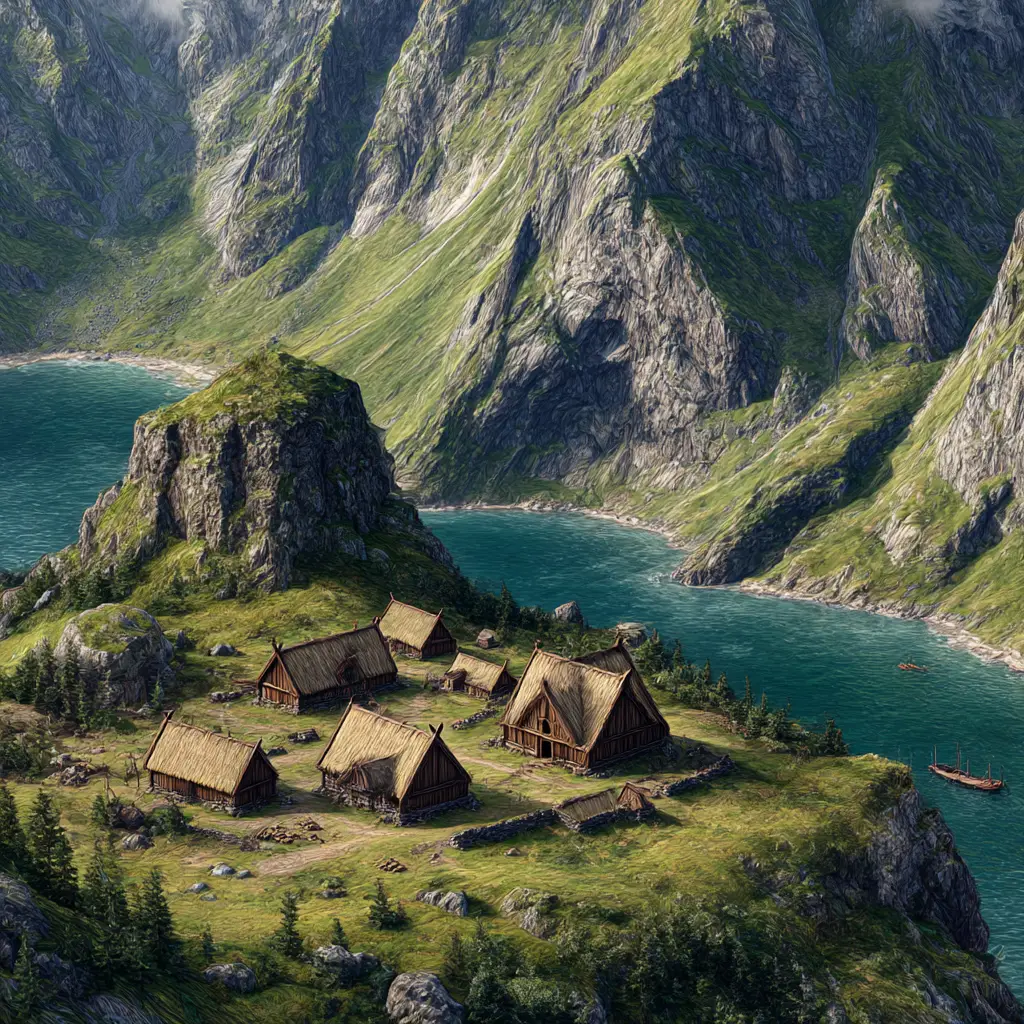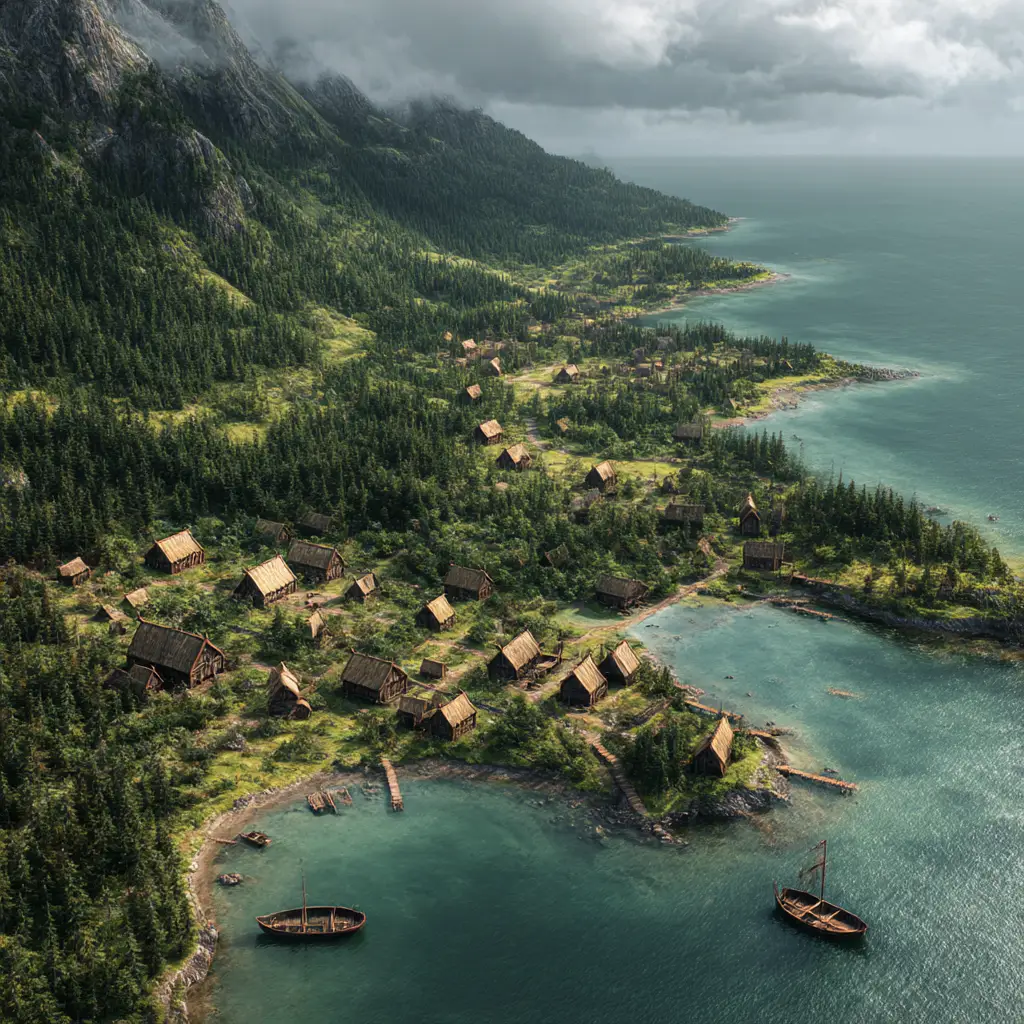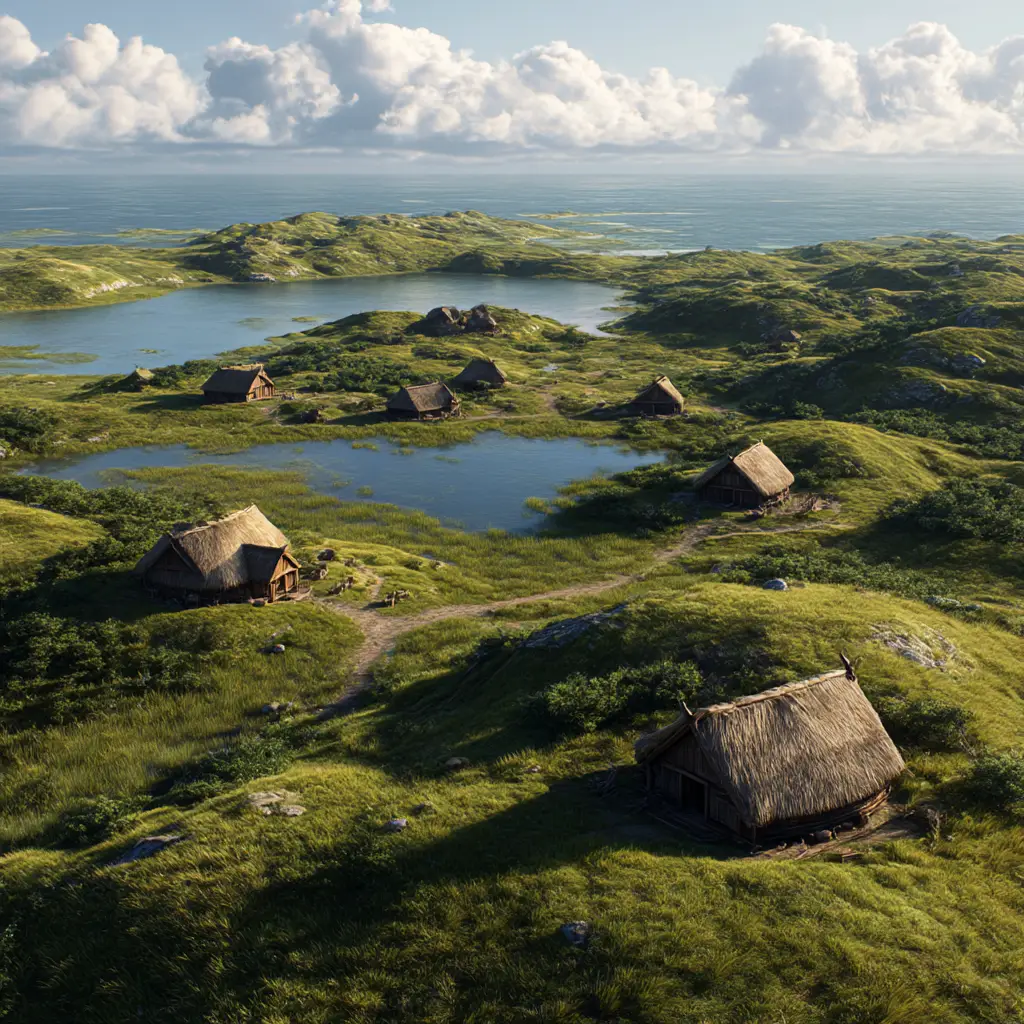The story of the Norse exploration and attempted settlement of Vinland is one of the most intriguing chapters in Viking history. The Saga of the Greenlanders, written in the late 13th century, provides a detailed narrative of these daring voyages across the Atlantic.
What Was Vinland?
Vinland, according to the sagas, was a lush and fertile land discovered by Norse explorers around the year 1000. It is widely believed to be located in what is now coastal North America, possibly Newfoundland or further south. The name Vinland is often interpreted to mean “Wine Land”, referring to the wild grapes that were said to grow there, though some scholars suggest it could also refer to pasture land.
Key Figures in the Saga
- Erik the Red: Although not directly involved in the Vinland expeditions, Erik was the father of Leif Erikson and the founder of Greenland’s first Norse settlements, setting the stage for further westward exploration.
- Leif Erikson: The saga credits Leif with the discovery of Vinland. He first stumbled upon a land he called Helluland (likely Baffin Island), then Markland (possibly Labrador), before reaching Vinland.
- Thorvald Erikson: Leif’s brother, Thorvald, led a follow-up expedition. He and his crew spent time exploring and settling parts of Vinland, but Thorvald was eventually killed in conflict with Indigenous peoples.
- Freydis Eiriksdottir: Leif’s half-sister, Freydis, led one of the later expeditions to Vinland. Her story is particularly dramatic, involving conflict, betrayal, and survival in harsh conditions.
- Thorfinn Karlsefni: Another prominent explorer who attempted to establish a lasting settlement in Vinland. He led a large group of settlers and stayed for several years, engaging in trade and occasional skirmishes with local Indigenous groups.
The Settlement Experience
The Norse settlers found Vinland to be rich in resources:
- Timber – Abundant forests provided much-needed wood, which was scarce in Greenland.
- Wildlife – The area teemed with game, fish, and other sources of food.
- Fertile Soil – The land was good for limited farming and supported grazing animals.
However, the settlers also faced significant challenges:
- Hostile Encounters – The Norse referred to the local Indigenous peoples as Skrælings. Relations were tense, often erupting into violence.
- Isolation – The distance from Greenland made resupply difficult.
- Harsh Winters – Despite being milder than Greenland, Vinland still had cold winters that tested the settlers’ endurance.
Legacy and Historical Impact
Although the Norse settlements in Vinland were short-lived, lasting no more than a few years, their voyages marked the first known European contact with North America, centuries before Columbus. Archaeological discoveries, such as the site at L’Anse aux Meadows in Newfoundland, provide tangible evidence of these expeditions and confirm parts of the saga’s story.
The Saga of the Greenlanders, alongside the Saga of Erik the Red, remains a crucial source for understanding the scope and ambition of Viking exploration. It highlights not just the adventurous spirit of the Norse but also the challenges of early transatlantic travel and colonisation.


